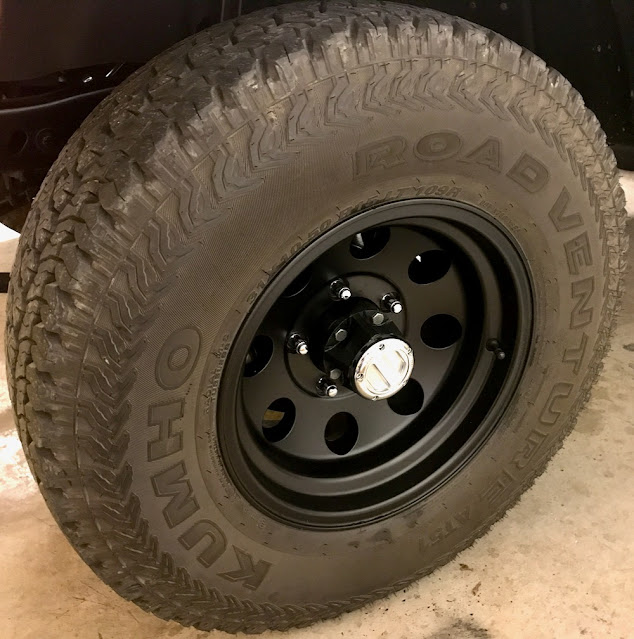Upon inspection, I was shocked to find many plastic parts/gears and the dial itself...! I also found one of the ring gears to be cracked which caused the bind.
I began scouring many sites on locking hubs only to find out that the Warn and SuperWench no longer make their much recommended locking hubs for any of the CJ7 models. I did find that MileMarker does make a quality, all metal, replacement and is well reviewed.
CJ Universal (6-bolt 27 spline) ’72-’86 Mile Marker #457 1 Pair
CJ Universal (5-bolt 27 spline) ’80-’86 Mile Marker #470 1 Pair
AMC ran various combinations of axles so be sure to check bolt pattern. Mine is a mid-year 1986 with the Dana 30 front axle and 5 bolt pattern.
Parts:
10 each 3/8-16 x 1 1/2" Grade 5 zinc plated, hex head bolts
Gasket Maker (I used Permatex 25228 The Right Stuff)
Removal Procedure:
- Put the front end on jack stands so that tires clear ground.
- Remove cap from existing locking hubs.
- Remove circlip from axle spindle.
- Remove locking hub bolts and pull straight off. I had to tap with a dead blow hammer.
Installation Procedure:
- Clean off spindle (could be a good time to inspect wheel bearings).
- Dress surface of wheel hub and address if necessary.
- Before removing locking hub cap, mark orientation of cap to hub with a piece of painters tape and don't rotate the dial after removing cap.
- Separate the locking hub cap from the locking hub.
- Wipe, with denatured alcohol, mating surfaces of wheel hub and locking hub.

- Note: I decided not to use the paper gaskets that came with the locking hubs.
- Create a bead of the gasket maker on the wheel hub only; allow 15 minutes to skin over.
- Then finger tight the locking hub to the wheel hub until there is squeeze out. Clean up squeeze out.
- Wait the prescribed time, at least an hour, before torquing down to 30 ft-lbs.
- Reinstall circlip to spindle. You may need to use a pry bar at the u-joint behind the wheel to push the spindle deeper into the wheel hub to expose the groove for the circlip. Make sure the circlip is in the groove.

- Clean mating surfaces of locking hub and cap.
- Apply gasket maker on locking hub mating surface only; allow 15 minutes to skin over.

- While aligning the painters tape on the hub and the cap, finger tight the locking hub to the wheel hub until there is squeeze out. Clean up squeeze out.
- Wait the prescribed time, at least an hour, before torquing down to 30 in-lbs.
- Once the cap is secured to the hub it is okay to turn the selector dial.

























